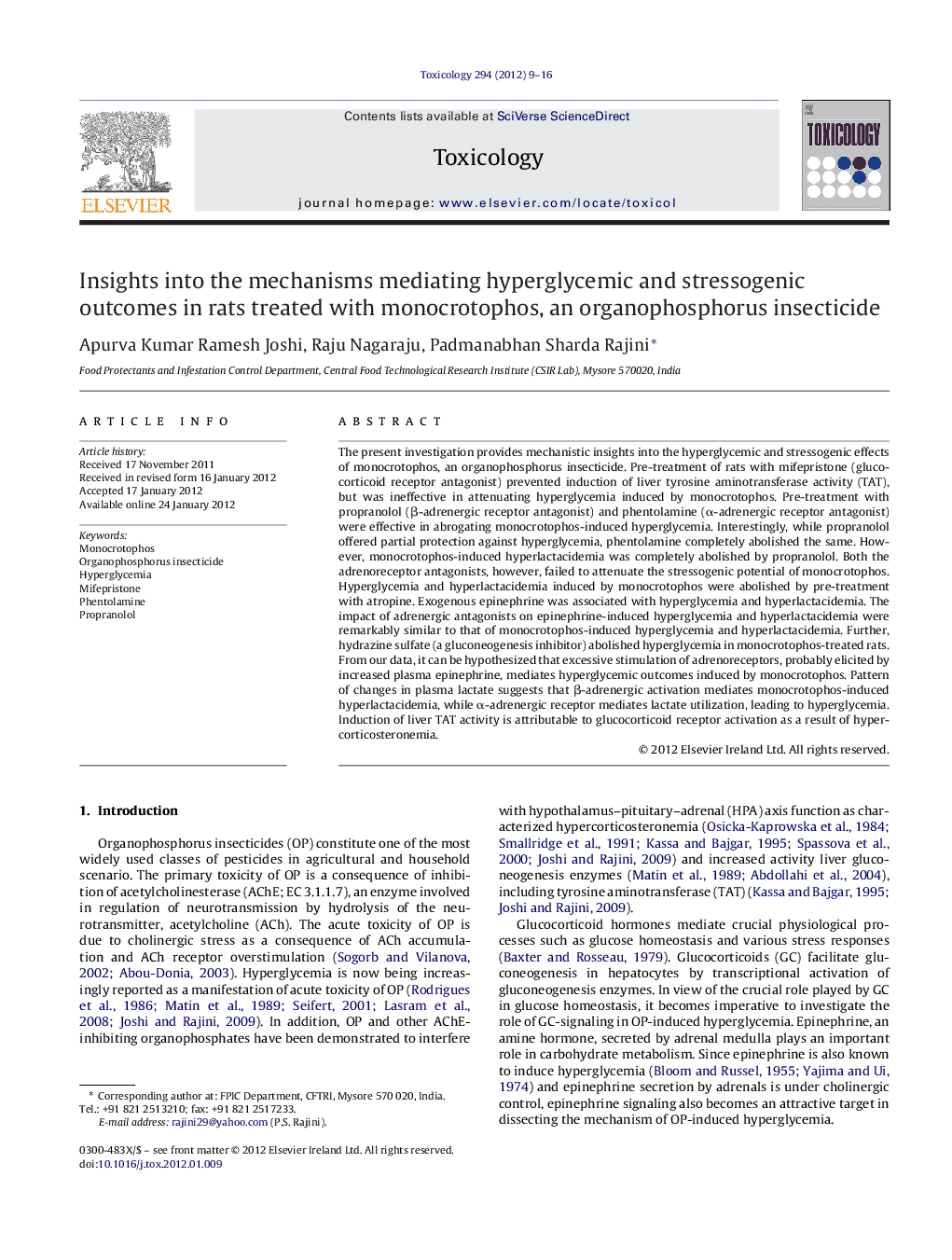| Article ID | Journal | Published Year | Pages | File Type |
|---|---|---|---|---|
| 2595757 | Toxicology | 2012 | 8 Pages |
The present investigation provides mechanistic insights into the hyperglycemic and stressogenic effects of monocrotophos, an organophosphorus insecticide. Pre-treatment of rats with mifepristone (glucocorticoid receptor antagonist) prevented induction of liver tyrosine aminotransferase activity (TAT), but was ineffective in attenuating hyperglycemia induced by monocrotophos. Pre-treatment with propranolol (β-adrenergic receptor antagonist) and phentolamine (α-adrenergic receptor antagonist) were effective in abrogating monocrotophos-induced hyperglycemia. Interestingly, while propranolol offered partial protection against hyperglycemia, phentolamine completely abolished the same. However, monocrotophos-induced hyperlactacidemia was completely abolished by propranolol. Both the adrenoreceptor antagonists, however, failed to attenuate the stressogenic potential of monocrotophos. Hyperglycemia and hyperlactacidemia induced by monocrotophos were abolished by pre-treatment with atropine. Exogenous epinephrine was associated with hyperglycemia and hyperlactacidemia. The impact of adrenergic antagonists on epinephrine-induced hyperglycemia and hyperlactacidemia were remarkably similar to that of monocrotophos-induced hyperglycemia and hyperlactacidemia. Further, hydrazine sulfate (a gluconeogenesis inhibitor) abolished hyperglycemia in monocrotophos-treated rats. From our data, it can be hypothesized that excessive stimulation of adrenoreceptors, probably elicited by increased plasma epinephrine, mediates hyperglycemic outcomes induced by monocrotophos. Pattern of changes in plasma lactate suggests that β-adrenergic activation mediates monocrotophos-induced hyperlactacidemia, while α-adrenergic receptor mediates lactate utilization, leading to hyperglycemia. Induction of liver TAT activity is attributable to glucocorticoid receptor activation as a result of hypercorticosteronemia.
Graphical abstractFigure optionsDownload full-size imageDownload as PowerPoint slide
